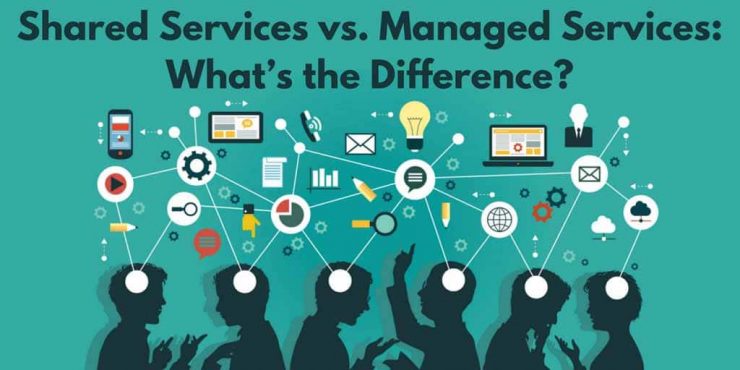
The services that your company uses depend on a number of factors. These vary from the size of your company to the skills of the personnel who are working for your business.
Typically, there are only two options in information technology (IT) when it comes to service types: shared services vs. managed services.
WHAT IS A SHARED SERVICE MODEL?
Shared services is a business model that leverage resources across an organization. This results in lower costs with agreed-upon customer service levels. It’s a separate business unit that delivers numerous services to both the corporate functions and operating business units.
The shared service model surrounds one goal. This goal is to allow each business division to concentrate its limited resources on the activities that support the division’s business goals.
WHAT ARE THE BENEFITS OF A SHARED SERVICE MODEL?
There are several benefits of a shared services model, including the following:
- Cost Efficiency – Back-office operations centralize when multiple divisions of the same company use them and eliminate redundancy.
- Culture – People with the skill and mindset to optimize the model beyond the back-office.
- Decision Support –Data analyzed and delivered as reliable and actionable information.
- Scalability – The shared services model can be scaled for both acquisition/geographic and service scope expansion with a relatively low additional cost.
- Free to Focus – Operating units will be free to focus on their operations and external customers. This is because of the reliance on the shared services model for support.
WHAT IS A MANAGED SERVICES MODEL?
A managed services model is a distinct kind of outsourcing that covers all IT functions. This is also known as the fully outsourced model. In a managed services model, the provider takes over all the technology decisions. However, these decision must be within the parameters that the business has set. The only significant role the business has in the managed services model is to review the processes.
The managed IT service provider is a company that works remotely to manage their customer’s IT infrastructure and/or end-user systems. This is a proactive approach and part of a subscription model.
WHAT ARE THE BENEFITS OF A MANAGED SERVICES MODEL?
There are numerous benefits of a managed services model, including the following four below:
- Risk Reduction – In a managed services model, the managed IT service provider takes all the risks. If something damages the technology in any way, the provider is the one that’s responsible to repair it.
- Fixed Cost – This refers to a month-to-month payments that will never fluctuate. This way your company will know precisely how much it will need to budget for its IT.
- Knowledge Retention – Since an outsourced vendor runs the company’s IT department, there is no employee turnover. The managed IT services provider will keep the information about your company on file. They will also bring expertise from previous clients to your company.
- Focus on Core Business – The managed services model will free up the rest of your employees from any IT concerns. It will also scale out any processes that are not helping the company reach its goals.
Integralis offers both a Shared Service and a Managed Service model – so we can design a support package that best suits your environment and goals.
If you would like to know more about the shared services vs. managed services comparison, contact us today!

